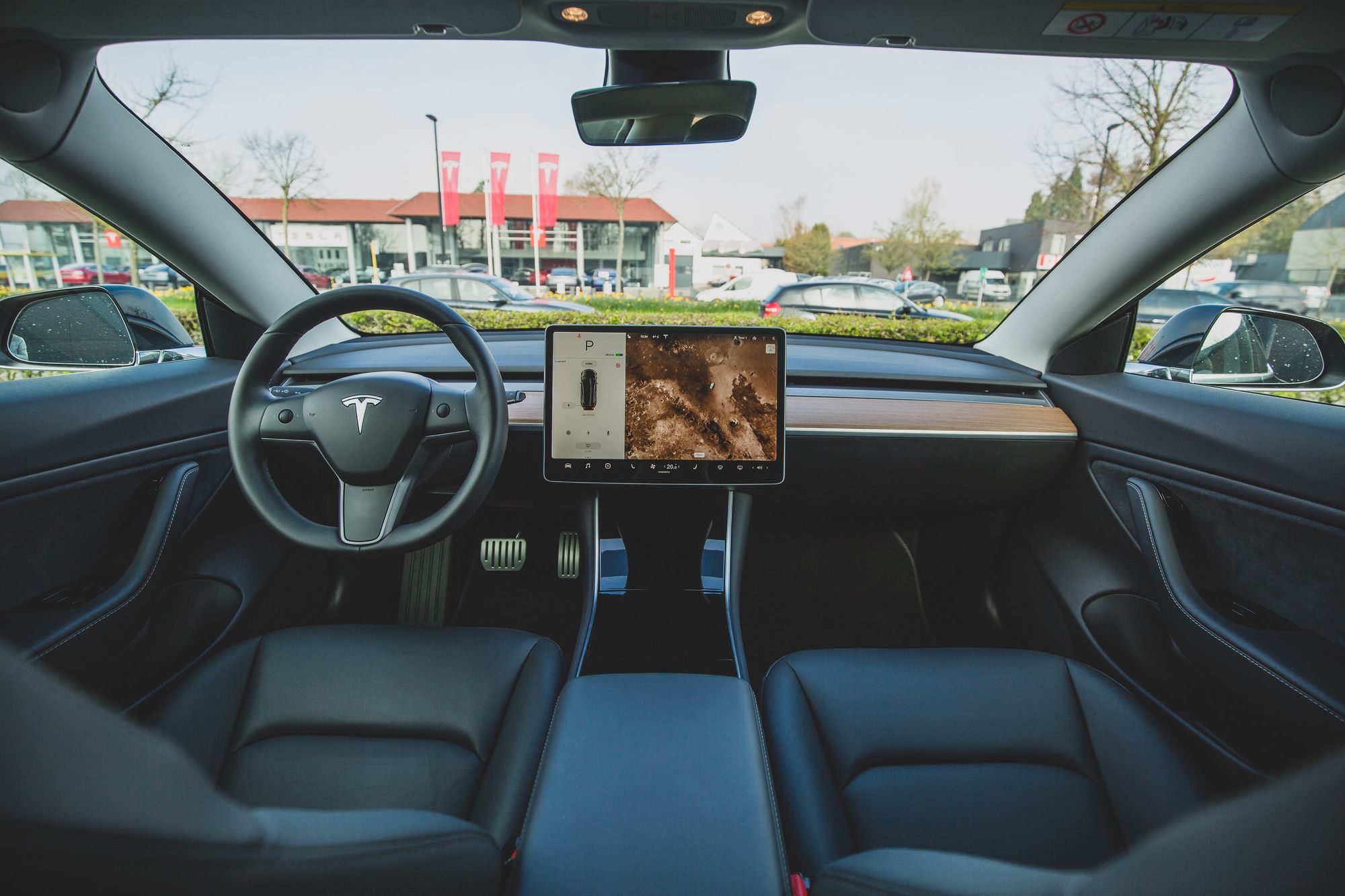Self-driving cars: a moral imperative

In 21 lessons for the 21st century, Yuval Noah Harari talks about self-driving cars. Specifically, he argues for self-driving cars as a moral imperative. Before reading that book a while ago, I was in the "let's not" camp. However, Harari's simple argument changed my mind.
Job losses
Self-driving cars sound futuristic and impressive, but let's start with why some may be against the idea. Some people make a living off driving vehicles: cab/taxi drivers, HGV (heavy good vehicle like lorries and trucks) drivers, bus drivers, chauffers, delivery (e.g. parcels) drivers (to some extent), etc. These are all people who need to make a living, to help pay for the family and themselves. By automating their job, we are taking away their source of source of income.
One might argue that they can be retrained – that's a possibility, but that may be hard. One thorny question that arises is who is to pay for it? If it's the government, then we may need to look closer at how effective our existing strategies are for helping the unemployed find work (I'm not implying they're not effective). Alternatively, it may seem fair that whoever is benefiting (e.g. the delivery company that is replacing humans) pays. In the absence of regulation to mandate this, this act of charity might happen, but the company would need to be able to justify this along with more than just the "it's the right thing to do" line (I'm hoping to be proven wrong on this point). A third option, then, is the person themselves. It's unlikely to be a single step from humans to full autonomy. Rather, it's likely to come in waves, where there may be laws like a qualified driver needing to be behind the wheel and attentive (in one of the early waves). Being able to watch this transition happen in slow-motion may impel some drivers to take the necessary actions to retrain of their own accord. That's great, but what about those that don't (for whatever reason, e.g. absence of spare time and/or money)?
In recent days in Europe, we have seen numerous news reports on the shortage of HGV drivers. There is also said to be shortages across the pond in the U.S. With fewer young people wanting to take up a career in driving large vehicles, perhaps out of concern for the limited future prospects in the field, we have a gap to fill. However, until fully autonomous vehicles are here, we still need humans to fill that gap, so more needs to be done to attract people to become drivers. To increase the number of active HGV drivers, the UK government has recently announced a plan for its department of education to put in up to £10 million into training programmes to get up to 3,000 more HGV drivers (in addition to a plea requesting those with HGV licenses that left the field to return). Assuming this will be an effective programme, it is reassuring to see such intervention from the government. If similar schemes can be implemented in other areas where supply is critical, particularly sectors that we aren't expecting to automate soon, this may be a partial solution to helping displaced employees in one sector change careers.
Saving lives
When you hear about self-driving cars, you may also hear figures like 38,000 deaths on U.S. roads or 1.35 million road deaths globally (1). Humans may not be the best drivers. Even if we exclude the speeders, those driving under the influence of alcohol or drugs, those overtaking from the side of the road (the left in the UK), the tailgaters and all the other drivers that are intentionally bad and annoying, our roads could still be considerably safer (ask any cyclist). For example, we may have people who unintentionally fall asleep, even if it's micro-sleep, which could be potentially life-threatening. Tired drivers are an issue and hopefully, if we can remove daylight saving time and have controls in a car that can detect signs of drowsiness, we can reduce the number of road fatalities caused by tiredness. Still, accidents happen. Self-driving cars can react quicker than we can (e.g. brake sooner), won't have blind spots (at least not in the traditional sense) with cameras suitably placed, won't get tired, drive better in poor weather conditions (darkness, fog, etc.) or drive irresponsibly (eventually).
While they may be safer than humans, there are, unfortunately, still casualties. News reports of incidents where a mistake was made (e.g. the car mistaking a cyclist for a bag) are unacceptable. Even if the technology today is safer than humans, our expectation bar is rightfully considerably higher. It may be hard for self-driving cars today to handle strange edge cases that they hadn't encountered, but it's a technical challenge we need to solve and demonstrate before widespread acceptance.
A temporary spike in road accidents?

Previously, I mentioned that autonomous vehicles are likely to occur in waves. Let's look into what those different waves are:
Level 0: no automation. This is your standard car that isn't equipped with any autonomous technology, such as sensors and cameras. Very popular
Level 1: driver assistance. The vehicle that can assist drivers, but still require a trained driver behind the wheel. Some vehicles today are level 1 if they can help with cruise control and lane keep assist (help put you back on track if you veer off slightly). Quite popular.
Level 2: partial automation. A human driver is needed to have their hands on the wheel at all times. With level 2 automation, the car can help with managing speed and steering, ensuring you keep a fair distance behind the vehicle in front of you. As with level 1, steering assist can also help centre your vehicle if you move off a straight line. An example is Tesla Autopilot.
Level 3: conditional automation. Level 3 vehicles can drive themselves under ideal conditions in certain scenarios, such as while on a motorway/highway where the lines are clearly divided. You don't need to have your hands on the steering while, but a qualified driver is still required to sit in the driving seat to take over if needed.
Level 4: high automation. These vehicles will be able to drive themselves without human input in most scenarios. This may be limited to known cases where the level 4 vehicles have demonstrated that they're safe. Had there not been legal restrictions in place, we would likely see more level 4 vehicles on the road today.
Level 5: full automation. These are your true driverless vehicles. They should be able to handle all conditions and not need any human intervention. In theory, you could even put a child, a blind person or an unqualified driver in the driver seat.
See (2) for the source of this information
As humans drive less and trust autonomous vehicles more, we will have less experience driving and our driving skills may become rusty/out of touch (particularly true of levels 2-4). This may mean that if the time comes up for you to intervene in a hazardous situation, you may no longer be sufficiently skilled enough to handle the situation effectively due to lack of practice. The point being here that to get to a reduction in safety, we may first see an increase in the number of accidents (this is purely speculative on my part). And yes, there's also the aforementioned issue of the autonomous vehicles themselves making mistakes.
A moral imperative
Coming back to Harari, he posed a simple question. What matters more: saving jobs or saving lives? While the ideal is both (jobs and lives), if self-driving cars are safer, it would seem folly to not allow development to continue working on this. It's worth noting that self-driving cars can also assist humans, which may be closer to our ideal. Tesla's Autopilot is a good example of this; it's able to warn the human driver if it detects a collision may happen.
It can be hard to justify autonomous vehicles when innocent lives may be claimed due to mistakes on the part of autonomous vehicles, particularly to those families that have been affected. Autonomous vehicles may follow a similar path to aeroplanes, where safety improves as technology improve and necessary regulation is put in place to demand ever-higher levels of safety.
Sources:
1. Association for Safe International Road Travel. https://www.asirt.org/safe-travel/road-safety-facts/
2. The 5 Levels of Autonomous Vehicles. https://www.truecar.com/blog/5-levels-autonomous-vehicles/
Featured image by Roberto Nickson on Unsplash


